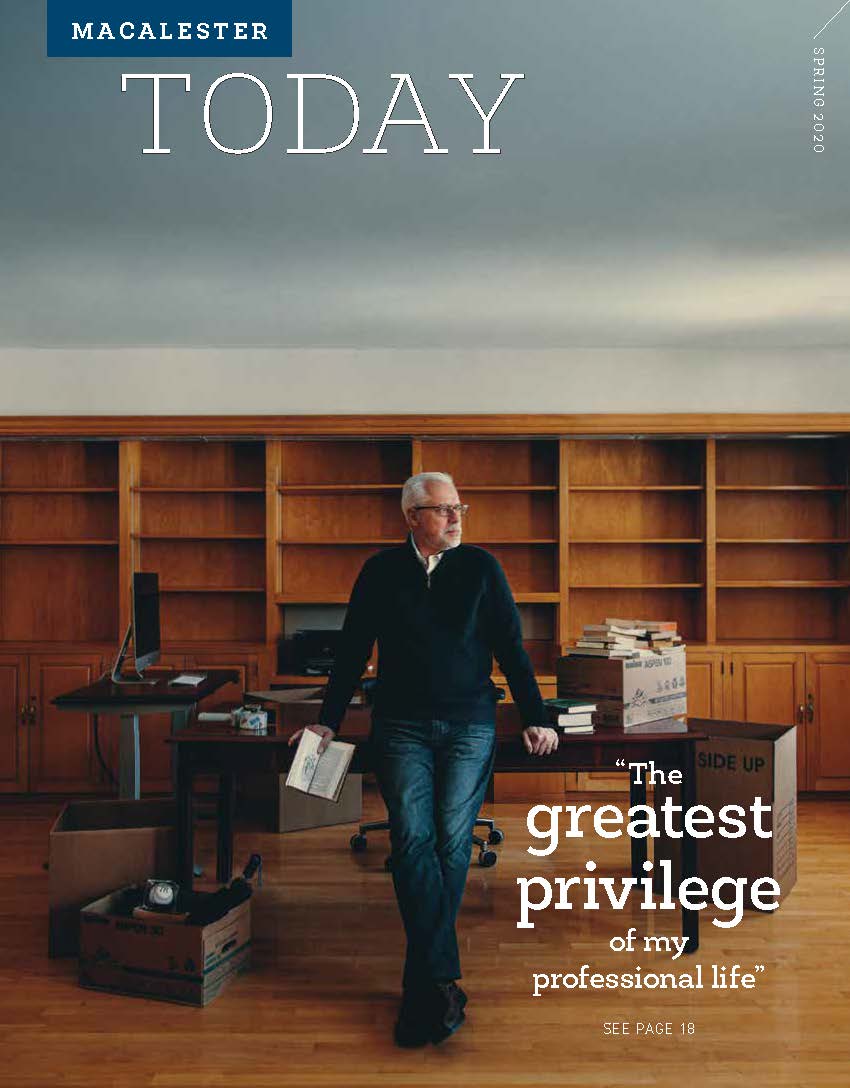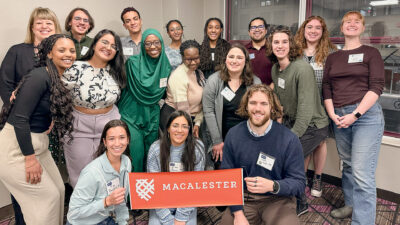
About 40 percent of the patients that Dr. Inell Rosario ’87 sees are having trouble with one of life’s most basic needs: eight nightly hours of restorative sleep.
Rosario—founder and president of Andros ENT & Sleep Center in Inver Grove Heights, Minn.—treats patients suffering with disorders including sleep apnea and insomnia. If her patients asked her about her own sleep habits, they might be surprised by her answer.
“I definitely try to practice what I preach most of the time, except when you see an email from me at one in the morning,” she says. “My goal is to get seven hours of sleep. I wake up, I feel fine, and I can get through a long day.”
When it comes to sleep, there’s no one-size-fits-all prescription—as evidenced by Rosario’s six or seven hours a night. Ideal sleep duration, like so much else about our bodies, varies, but consensus agreement is that at least six hours is a must. We asked Rosario and other Macalester alumni who are experts in sleep to talk about what’s true, what’s not, and what’s best when it comes shuteye.
Legend 1: Catch-up sleep helps balance the body
It’s early afternoon, and you’re dragging because you barely slept the night before. The couch and a comforter beckon. Time for a quick catnap?
“One of the classic problems that people run into when they try to compensate for not sleeping well is that they try to catch up on sleep wherever they can get it. They might take a nap or sleep in on the weekends,” says Bennett Goltz ’99, a physician assistant for Fairview Health Services.
Contrary to popular wisdom, and his own practices during his days at Mac, “it’s generally not a good idea to sleep in the daytime,” he says, noting that naps typically make people less tired for the following night. “It just perpetuates the insomnia.”
Rosario says that if you must nap, it should last no longer than 45 minutes. For some, a 10-minute nap can be all the body needs to power through a productive afternoon. She encourages her patients to set a timer if they nap. “You want to not go into REM sleep at all,” she says.
Legend 2: Sleep problems are just sleep problems
Goltz stresses that there is a deep connection between sleep and mental health. “It’s generally a two-way street,” he says. “You’re not going to fix somebody’s depression by treating their insomnia, and you’re not going to cure somebody’s insomnia by treating their depression. You have to work on both.”
The relationship between sleep and mental health was very personal for Tyler Skluzacek ’16. When he was growing up, his father returned from combat in the Middle East with PTSD that manifested in traumatic nightmares.
“The overall quality of his sleep was affected,” he says. “He got more tired and more irritable, and the vicious cycle continued.”
The problems strained the family and led to his parents’ divorce when Skluzacek was in tenth grade. His father was still suffering nighttime symptoms when Skluzacek was at Mac. When Skluzacek was a senior, he entered HackDC2015, a programming competition focused on leveraging technology to address PTSD in veterans. He walked away with the prize for best mobile application for clinicians.
His winning app analyzes biometric signals from a smartwatch to sense and interrupt the onset of night terrors without waking a person up. It gives them a chance at a better night’s sleep and a foundation for better mental health.
As Skluzacek puts it, “You fix the sleep, you have an opportunity to fix the problem.”
His idea came from talking about his dad’s problems with psychiatrists at the competition.
“The root of my dad’s issues is sleep, and that’s the case with many other people,” Skluzacek says. He remembers psychologists at HackDC2015 telling him, “Without solving the sleep problems, you just remain in the vicious cycle of PTSD where your depression and anxiety symptoms worsen because you’re not getting enough sleep.”
Early versions of the app helped his father tremendously, he says. He has since sold his patent to a company that’s still developing it. Skluzacek is now in a doctoral program in computer science at the University of Chicago—where, he reports, he gets enough sleep.
Legend 3: REM sleep is nighttime’s holy grail
“A myth I hear all the time from patients is the idea that REM sleep—rapid-eye movement—is the most important and that, in particular, it’s the deepest stage of sleep,” says Ashley Rudnick ’04, a licensed clinical psychologist who practices behavioral sleep medicine in the Chicago area.
Not so, she says. REM sleep is important, especially for things like memory consolidation and emotion regulation. But it can’t be accurately described as deep sleep, which is more characteristic of the slow delta waves of stage 3 NREM (when growth hormone is released). Stage 3 NREM occurs in intervals throughout the night, but is most concentrated in the first half, comprising about 20 percent of total sleep duration in adults.
“If we look at a person’s polysomnogram when they’re in REM sleep, it looks very much like wakefulness,” she says. “The brainwaves are very similar—hence all the dream activity that’s associated with REM sleep. There are definitely restorative aspects of our cognitive and emotional functioning that happen during that time, but it is not the deepest stage of sleep from a brainwave perspective or physically the most restorative.”
Still, if you’re not getting enough sleep, you’re probably impacting your REM sleep the most, Rudnick says. The REM stage gets a little longer with each 90-minute sleep cycle, so cutting sleep time short means missing the longest REM periods that happen toward morning.
Legend 4: Stay in bed, even if you can’t sleep
Counterintuitive though it may be, if you can’t sleep, the best strategy is to stop trying. When Rudnick’s been tossing and turning for more than 15 to 20 minutes, she calls a timeout and gets up. Clock-checking is best avoided during the night because it tends to increase anxiety.
Her aim: “Do something that’s low key, relaxing, and calming. We don’t want to get into that pattern where our mind is starting to race and we’re lying there struggling to sleep and failing at it.”
That might mean reading, listening to a podcast, or even doing a routine household chore, like emptying the dishwasher or folding laundry.
A nightcap? Not a good idea.
“In the first half of the night, alcohol actually does cause people to go to sleep,” Goltz says. “But it just causes a lot of brief awakenings—and sometimes not so brief—after that.”
Sleep at Mac
The average Macalester first-year student gets a visit from Lisa Broek or Abbey Sanborn three times during their fall semester classes. The pair, who make up the health promotion staff at the Laurie Hamre Center for Health & Wellness, come bearing “sleep swag.”
“Eye masks, ear plugs, and decaffeinated tea are the three items,” says Broek, director of health promotion.
The swag helps drive home the lessons of Macalester’s First-Year Sleep Well Initiative, which is designed to teach students the importance of developing good sleep habits early in their academic careers. Broek and Sanborn also offer advice on how to make a room “sleep-friendly,” talk about the effects of poor sleep and benefits of good sleep, and manage a “nap map” that identifies some of the best spots on campus for a brief power nap.
“We know good sleep is a good mental health, self-care, and resilience practice,” Broek says. “We also know good sleep is related to better grades. It’s the foundation of success, academically and socially.”
By Matthew Dewald / Illustration by Lisa Haney
April 22 2020
Back to top





